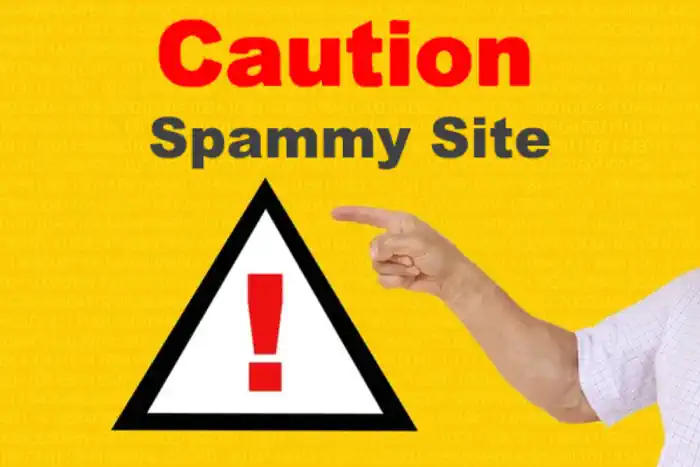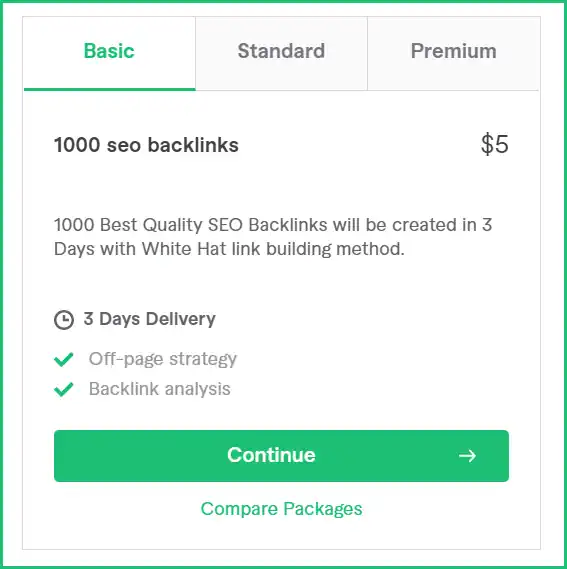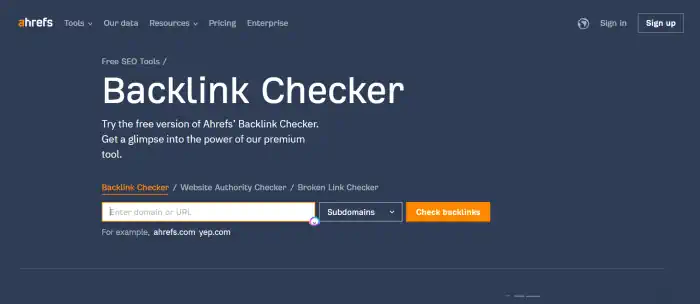You just published your website, and you’re super proud of it! Now you want to get it out there. You know you need backlinks, so you want to get as many as you can as quickly as possible, right? Wrong! Here’s why.

It’s true that backlinks are an important factor in improving a website’s search engine rankings and visibility. However, it’s important to approach backlinks with caution. While it may be tempting to try to acquire as many backlinks as possible as quickly as possible, this approach can be risky and may not be effective in the long run.
They Will Find You
Search engines like Google use algorithms to determine the quality and relevance of websites, and they are designed to identify and penalize websites that engage in spammy or manipulative link building practices. If a website has a lot of low-quality or spammy backlinks, it may be viewed negatively by the search engines and may suffer in terms of search engine rankings.
You want to improve your rankings, not make them worse!
The Safe Way
Gaining backlinks organically, by producing excellent content that other websites would want to connect to, is usually seen as the best practice. This can raise your website’s search engine ranks and help it become recognized as a leader in its field. While it may take longer to acquire backlinks this way, it is a safer and more sustainable approach in the long run.
What Not To Do
There are several types of backlinks that are generally considered spammy or low-quality, and that may be viewed negatively by search engines:
- Link farms: A link farm is a group of websites that are created specifically for the purpose of linking to other websites. These links are often low-quality and do not provide any value to the linked-to website.
- Paid links: Buying or selling links for the purpose of manipulating search engine rankings is generally considered spammy.
- Links from low-quality or spammy websites: Links from websites that are themselves spammy or of low quality may be viewed as spammy by search engines.
- Excessive or irrelevant links: Having too many backlinks, or having backlinks from websites that are unrelated to the content of the linked-to website, may be seen as spammy by search engines.
Buying Links
Buying backlinks from services like Fiverr or other link building services can be risky, as many of these services may use tactics that are viewed negatively by search engines. One common tactic used by these services is “blasting,” which involves sending out a large number of backlinks in a very short period of time.

While it may seem like getting a large number of backlinks quickly would be beneficial for your website’s search engine rankings, this is not the case. You want your backlink building to look natural. Unless your site is super high-authority with thousands of daily visitors, there’s no way you’re going to get 1000 natural backlinks in 3 days. And the search engines know that.
And how about all those links for just five dollars? No way! You may easily spend hundreds, if not thousands, of dollars on high-quality backlinks. And that’s only for a single backlink!
Buying these types of backlinks can also be ineffective because the sites that the links are blasted to most likely will not be relevant to the topic of your website. Additionally, the sites they are publishing your links on are probably of poor quality and stuffed to the gills with other links they have blasted.
When Someone Spams Your Site
Sometimes, someone will create spammy backlinks to your website with the intention of sabotaging it. This can be harmful to your website’s search engine rankings and reputation. Search engines may view these spammy backlinks as an attempt by you to manipulate your rankings, and they may penalize your website as a result.
This phenomenon, known as Negative SEO, often arises after your website has achieved a certain level of popularity. In most cases, a rival business is working to destroy you in order to further their own interests. Typically, this happens because the other website’s owner is trying to outrank your site and, rather than attempting to improve their own rankings, they focus their efforts on decreasing yours.
If you suspect that someone is creating spammy backlinks to your website with the intention of sabotaging it, there are a few steps you can take:
- Identify the spammy backlinks: Use a tool like Google Search Console or a backlink analysis tool to identify the spammy backlinks pointing to your website.
- Disavow the spammy backlinks: If the spammy backlinks are coming from low-quality or spammy websites, you can use the Google Search Console’s Disavow Links tool to tell Google to ignore these links.
- Reach out to the website owner: If the spammy backlinks are coming from a legitimate website, you can try reaching out to the website owner and ask them to remove the links.
If you suspect that someone is sending spammy backlinks to your site, you can check for them with this free backlink checker from ahrefs.

In conclusion, it is important to be proactive in addressing spammy backlinks, as they can harm your website’s reputation and search engine rankings. These types of backlinks are created with the sole purpose of manipulating search engine rankings, and they are generally considered low-quality and may be viewed negatively by search engines. Some examples of spammy backlinks include link farms, paid links, links from low-quality or spammy websites, and excessive or irrelevant links.
To protect your website’s search engine rankings and reputation, it is important to avoid these spammy backlinks and instead focus on earning high-quality backlinks naturally by creating valuable and relevant content that other websites will want to link to. While it may take longer to acquire backlinks this way, it is a safer and more sustainable approach in the long run.

